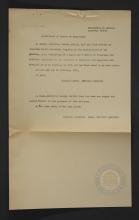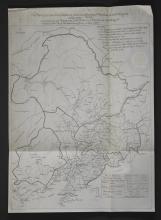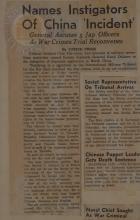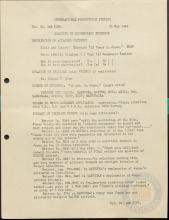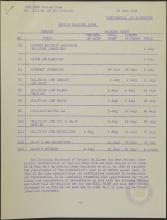Description:
Reports on the testimony by Chinese General Chin Teh-chun, vice minister of military operations, after a 12 day recess due to a lack of air conditioning in the IMTFE courtroom. Teh-chun's testimony focused on the Marco Polo Bridge incident (July 7, 1937) where, he stated, General Kenji Doihara was "the instigator of Japanese aggression in North China" as well as "the Mukden incident in Manchuria on September 18, 1931." He also named four other Japanese military officers (Sieji Katsuki, Seizo Kawabe, Renyam Mutaguchi, and Takashi Sakai) as instigators of the Marco Polo Bridge incident. The article also gives a synopsis of other events at the day's proceedings, including the fact that much of the morning session was occupied by straightening out language and translation issues.

